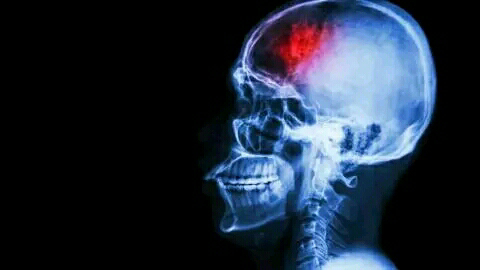The Global Burden of Diseases study showed a 26 percent increase in global stroke deaths during the past two decades.
The estimated incidence of stroke has increased more than 100% in low and middle income countries including India over last four to five decades. The risk of stroke-associated mortality is 22 times that of infectious diseases such as malaria and tuberculosis.
Why is Stroke a Medical & Surgical Emergency
A stroke also called cardiovascular accident (CVA) affects the arteries which carry oxygen and other essential nutrients.
A stroke also called cardiovascular accident (CVA) affects the arteries which carry oxygen and other essential nutrients.
Stroke is a medical and surgical emergency Time is very critical (so we call "Time is Brain") in stroke management This is because millions of neurons or nerve cells are lost every minute if the obstructed clot is not dissolved or removed. Once the neurons die, they can not be revived, and clinical symptoms persist.
Pre-hospital management for stroke patients is imperative Early identification of symptoms and seeking immediate medical help is decisive
Public awareness for stroke symptoms in the catastrophic but treatable emergency The sooner treatment can be reduced.
What is Mechanical Thrombectomy (MT)
Mechanical thrombectomy (MT) is a minimally-invasive surgery.
Modern neurointervention and endovascular technique has revolutionized stroke treatment. With advanced neurointervention hardwires and technology, the brain clot can be easily removed and more effectively within less time, resulting early first pass reperfusion.
The widely accepted newer technique, mechanical thrombectomy (MT), has been found to be treatment of choice (Class 1A evidence, AHA guideline) in ischemic stroke, particularly large vessel occlusion. The newer technique provides significant edge over before non-invasive intravenous clot dissolving drug, for the early restore of blood supply to brain
Treatments in India have so far focused on dissolving or aspirating the blocks over a period of time and have had limited success.
Mechanical thrombectomy (MT) is a minimally-invasive surgery in which a stroke interventionist uses specific device to remove a clot from a patient's blocked artery in the brain. With improved awareness and more number of expertise, number of patients or prevalence of acute stroke
However, it is less than 6 to 7%, as total number of stroke patients who report in hospital within the golden period in even less than that Public awareness and broad stroke care program will definitely help in more patients.
How is the MT Surgery Performed.
During MT, under fluoroscopy guidance, the doctor guides their instruments through the patient's arteries to the clot, extracting it from the patient all at once. The doctor starts the process by making a few millimeters small incision in either the groin to access the artery. Following this the interventionist threads a catheter through the artery supply to the brain and which has been occluded by the clot.
Once the microcatheter is placed in the desired position in the form of roadmap, we insert a small net-like device called a stent retriever in the catheter and guide it to the blockage. At this point, with the help of deployed stent retriever we jill and engage the blot clot, to remove the whole thing backwards.
Clot aspiration is another very promising technique of successful MT in stroke patients. Expertise, hardware availability, and more importantly an in-hospital comprehensive stroke program is crucial for successful MT and better results.
From simple stent retriever, we evolved to other effective, early first pass reperfusion technique like our own master-hand "DAl Aspiration & Fluff Technique". This is a significant increase in the under-stress brain tissue (penumbra) from getting permanent neurological damage after brain attack.
Mechanical thrombectomy has also helped in improving the window of stroke treatment from six to 24 hours.
It is twice as effective, the clot which is the root cause of the stroke is completely trapped by a special device called the 'stent retriever' and then extracted without open surgery. This restores blood flow immediately and revives dying brain cells, thereby reversing stroke damage.
Recently, we observed that in more than 90% of patients, brain blood clot could be successfully removed from the brain.
I hope you like the article than don't forget to suscribe to get the latest updates
Like share comment your opinion about this article.
For information or any queries comment down below.
This article is not to harm any sentiments in this articles only express the authors sharing or posted for the public awareness.not to harm anyone
















No comments:
Post a Comment